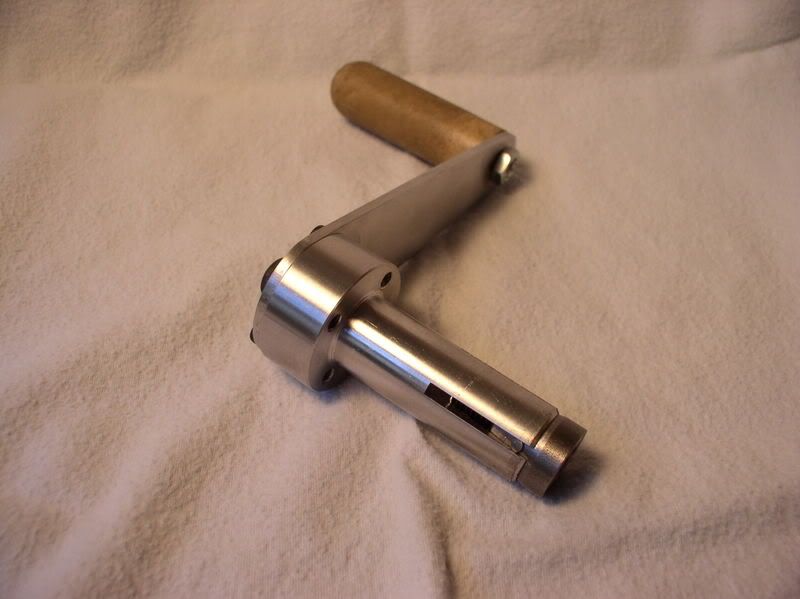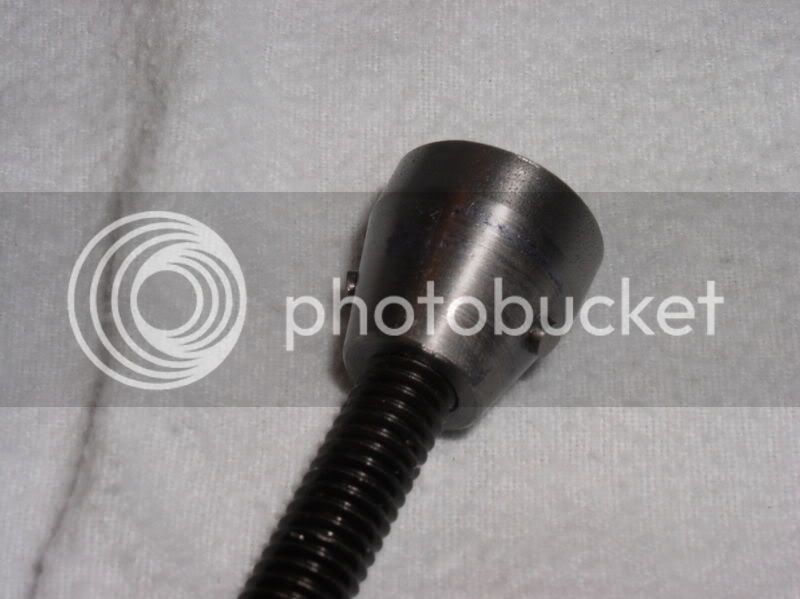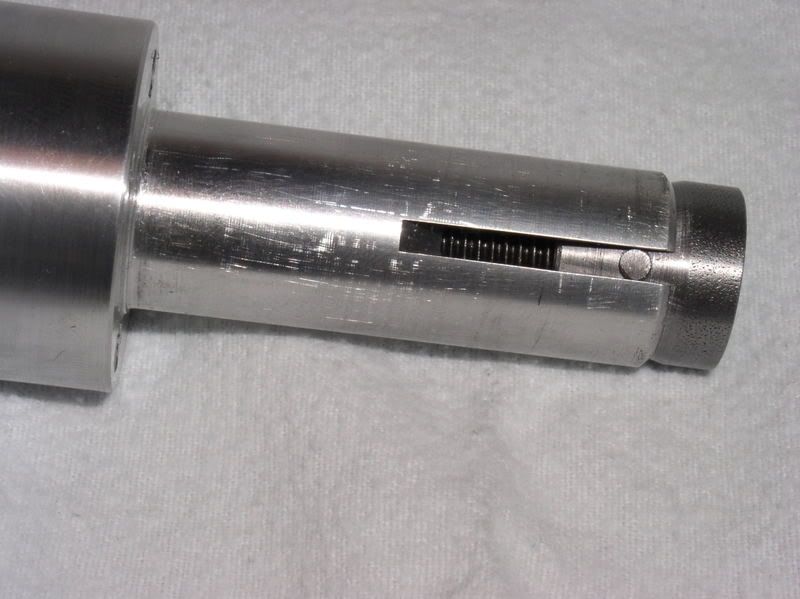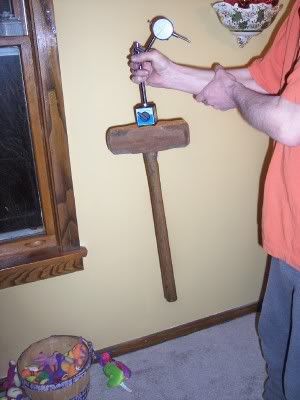mklotz
Well-Known Member
My lathe has a threaded spindle with no lock and I'm in the nasty habit (listen up here newbies!) of engaging the backgear to lock the spindle so I can get leverage to unscrew the chucks. Everytime I do this I keep telling myself, "One of these days you're going to do this and hear a ping as a tooth comes off the bull gear."
I finally collected a couple of round tuits and made myself a crank for the spindle. The first photo shows the component parts. On one end of the crank is a free-wheeling handle. On the other end is an aluminum 'gripper' that will expand to grip the inside of the spindle. In front is the conical expander nut and the draw-in bolt that activates it. I chose aluminum for the gripper so that it wouldn't mar the bore of the spindle (not that I think that's terribly important).

Here you see the bolt and expander nut installed in the gripper.

And here is how the whole assembly mounts to the lathe.

The expander gets a real death-grip on the spindle with only about a half turn on the draw-in bolt. Removing stuck chucks is really easy now. [Even if you oil the threads before mounting the chuck, which I do, the turning forces will tighten up that thread very nicely. A crash, not that I've ever had any , will really lock things up.]
, will really lock things up.]
Of course, the other important use for the crank is to turn the chuck by hand when threading up to a shoulder. Imagine putting three or four fine threads up to a shoulder on a delicate camera filter mounting ring or telescope eyepiece adaptor. Doing it under power is way beyond my skill set whereas with the hand crank it's an easy job.
This was a fun job. I normally make tiny model parts so the chance to make big stuff where every measurement and machining step is easily seen and accomplished is a welcome break.
I finally collected a couple of round tuits and made myself a crank for the spindle. The first photo shows the component parts. On one end of the crank is a free-wheeling handle. On the other end is an aluminum 'gripper' that will expand to grip the inside of the spindle. In front is the conical expander nut and the draw-in bolt that activates it. I chose aluminum for the gripper so that it wouldn't mar the bore of the spindle (not that I think that's terribly important).

Here you see the bolt and expander nut installed in the gripper.

And here is how the whole assembly mounts to the lathe.

The expander gets a real death-grip on the spindle with only about a half turn on the draw-in bolt. Removing stuck chucks is really easy now. [Even if you oil the threads before mounting the chuck, which I do, the turning forces will tighten up that thread very nicely. A crash, not that I've ever had any
Of course, the other important use for the crank is to turn the chuck by hand when threading up to a shoulder. Imagine putting three or four fine threads up to a shoulder on a delicate camera filter mounting ring or telescope eyepiece adaptor. Doing it under power is way beyond my skill set whereas with the hand crank it's an easy job.
This was a fun job. I normally make tiny model parts so the chance to make big stuff where every measurement and machining step is easily seen and accomplished is a welcome break.








![DreamPlan Home Design and Landscaping Software Free for Windows [PC Download]](https://m.media-amazon.com/images/I/51kvZH2dVLL._SL500_.jpg)






















































